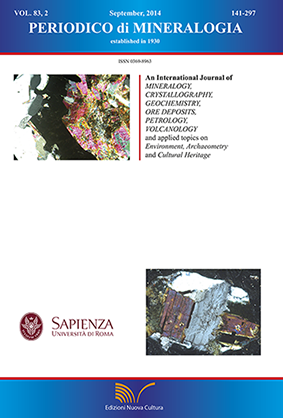External milli-beam PIXE analysis of the mineral pigments of glazed Iznik (Turkey) ceramics
DOI:
https://doi.org/10.2451/2014PM0009Keywords:
external milli-beam PIXE, Iznik ceramics, pigments, Cobalt sources.Abstract
25 Iznik glazed ceramics fragments - shards of vessels, plates for wall decorations found in Moldova’s capital Suceava, in Prince Vasile Lupu (1600-1640) palace and shards excavated from a Danube ford - Piua Pietrii, a renowned commercial centre during 17th Century were studied. We used external milli-beam PIXE (Particle Induced X-ray Emission) spectroscopy to investigate the capabilities of this method to identify the metals from ceramics mineral pigments. Cobalt, Lead-Antimony, Copper, Chromium, Iron and Manganese minerals used to obtain blue, yellow, green, red and brown colours were identified. Our PIXE results were compared with data from literature obtained on Iznik tiles samples using Raman spectroscopy proving a good compatibility.


